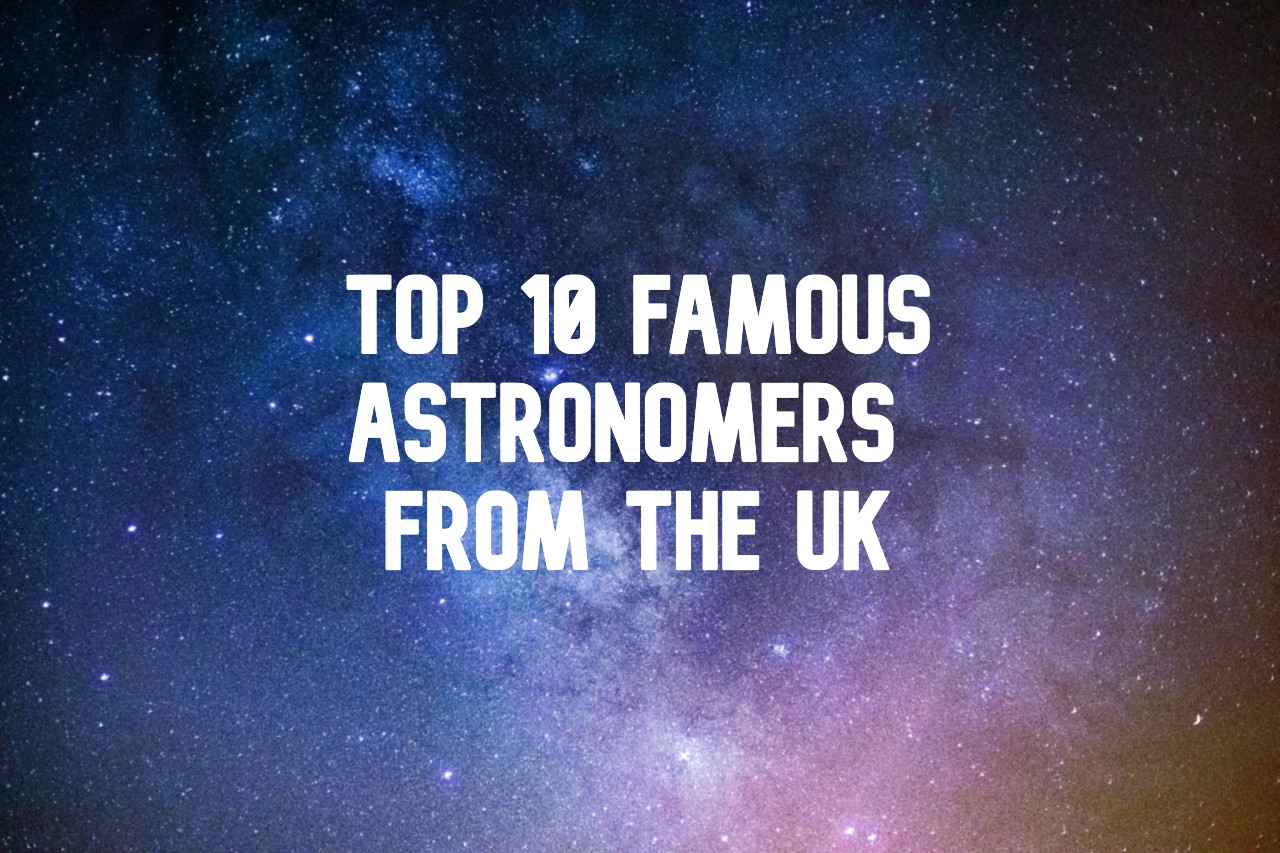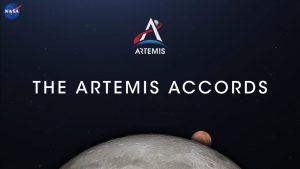The TOP 10 Famous British Astronomers Of All Time
29th Oct 2022
By some reckonings, the UK ranks third after the US and Germany in the number of outstanding scientists who have helped improve our understanding of the Universe, the solar system, and of course, planet Earth. Of the over 500 most famous astronomers of all time, almost 70 were born and worked in the United Kingdom. A detailed list of their names can be found on the Pantheon website. Here, we present the TOP 10 famous astronomers in the UK, so that you can learn about their outstanding contributions to world science.
Isaac Newton (1643-1727)
This legendary British scientist of the 17th century is known for:
- formulating the three laws of mechanics, the law of universal gravitation,
- developing colour theory,
- mathematically substantiating gravity, which helped to derive Kepler’s laws of planetary motion to build scientific explanations for the tides and the precession of the equinoxes,
- confirming the heliocentricity of the solar system, explaining that all physical and celestial bodies in the Universe move according to the same laws,
- creating the world’s first reflecting telescope.
These discoveries determined the development of physics and astronomy for many centuries to come. They also immortalized Newton in the world history of science. The unit of force in the International System of Units, newton, is named after him, and every year on his birthday (25th December or 4th January, depending on whether you’re utilising the Julian or Gergorian calendar, respectively), the scientific community celebrates Newtonmas.
Newton himself spoke rather modestly about his achievements, considering them his predecessors’ merit: “If I have seen further than others, it is by standing on the shoulders of giants.”
John Flamsteed (1646 – 1719)
This British scientist is known for being the first Astronomer Royal (1677), as well as producing the Britannicus star catalogue of 3,000 stars and the Atlas Coelestis star atlas, both published after his death. He laid the foundation stone for the Royal Greenwich Observatory and also made the first recorded observations of Uranus, although he erroneously catalogued it as a star. A lunar crater and an asteroid are named after Flamsteed, while his biography on Wikipedia has been translated into 50 languages and read over 200,000 times in the past 15 years.
Edmond Halley (1656-1742)
He was the second Astronomer Royal in Great Britain, succeeding John Flamsteed in 1720. He is best known for discovering Halley’s comet in 1682, which was named after him after the astronomer’s death. In 1676-1677, Halley built an observatory on the island of Saint Helena. Observing the night sky from there, he compiled a catalogue of the southern celestial hemisphere and recorded the passage of Mercury across the Sun.
In 1692, the scientist proposed the idea of a hollow Earth, consisting of a shell about 500 miles thick, two inner concentric shells, and an inner core. He suggested that each shell is surrounded by its own atmosphere and has its own magnetic poles, with each sphere rotating at a different speed. Halley proposed this scheme to explain the anomalous readings of the compass.
In 1694, Halley was condemned by the Royal Society for suggesting that a comet impact could have caused the Great Flood. A few centuries later, such theories were proposed later again, but they were all refuted by geologists.
William Herschel (1738-1822)
Despite his German origin, William Herschel is one of the most famous UK astronomers. He became famous for discovering the planet Uranus, its satellites and satellites of Saturn. He discovered infrared radiation and built over 60 telescopes.
Herschel was born in Hanover but emigrated to the UK at the age of 19. At first, like his father, Herschel was fond of music and composing, making a living by teaching and working as an organist in churches.
Intellectual curiosity and a desire to expand his practical potential led Herschel to astronomy. He started taking mirror-making lessons and soon began building his own telescopes and selling them. Eventually, he also managed to improve Newton’s reflecting telescope, which brought him worldwide fame.
The resolving power of the Herschel telescopes showed that many objects called nebulae were actually clusters of stars. On March 13, 1781, while observing, Herschel noticed a new object in the constellation Gemini. It was Uranus, the first planet to be discovered since antiquity, and Herschel became famous overnight. As a result of this discovery, King George III appointed him a court astronomer. He was also elected a Fellow of the Royal Society and given grants to build new telescopes. In 1820, Herschel was elected the first president of the Royal Astronomical Society.
Caroline Herschel (1750-1848)
William Herschel’s younger sister moved to the UK with him in 1772 to try out as a church choir vocalist in Bath. However, when William became interested in astronomy, Caroline fully supported his efforts, becoming the first of the famous British female astronomers as a result.
Caroline Lucretia Herschel’s most significant contribution to astronomy was the discovery of several comets, including the periodic comet 35P/Herschel–Rigollet. She was the first woman to receive a salary as a scientist and the first one in England to hold a public office. For her discoveries, she was awarded the Gold Medal of the Royal Astronomical Society (1828) and elected an honorary member (1835), as well as an honorary member of the Royal Irish Academy (1838). In honour of her 96th birthday, the King of Prussia presented her with the Gold Medal for Science.
Together, Caroline and William Herschel discovered more than 2,400 astronomical objects in twenty years. A crater on the Moon and asteroid 281 Lucretia, discovered in 1888, were named in her honour.
Caroline Herschel died peacefully in her homeland, Hannover, at the age of 98. Her tombstone is inscribed: “The eyes of her who is glorified here below turned to the starry heavens.”
Joseph Lockyer (1836-1920)
This British astronomer is credited with the discovery of helium gas. In 1868, he saw a yellow line in a spectrum taken with a telescope near the edge of the Sun. At that time, there was no way to explain this phenomenon, so Lockyer suggested that it was an unknown solar element, dubbing it Helios (Greek for Sun). The French scientist Pierre Janssen had previously observed the same yellow line during a solar eclipse on August 18, 1868, but since their papers reached the French Academy on the same day, both Janssen and Lockyer received a joint award for the discovery of helium. To facilitate the exchange of ideas between scientific disciplines, Lockyer established the general scientific journal Nature in 1869 and remained its editor almost until his death.
In 1885, Lockyer became the world’s first professor of astronomical physics at the Royal College of Science at South Kensington, now part of the Imperial College. The Observatory of Solar Physics was built for him there, and Lockyer directed this Observatory until 1913.
Lockyer led eight expeditions to observe solar eclipses, particularly to Sicily and India. He is also considered one of the founders of archaeoastronomy. For his achievements, the scientist was awarded the Janssen medal of the Paris Academy of Sciences (1875) and consecrated to the Knights of the British Order (1897) during his lifetime. Today, craters on the Moon and Mars are named after him.
Arthur Eddington (1882-1944)
Sir Arthur Stanley Eddington was a British astronomer, physicist, mathematician, philosopher, and popularizer of science. The professor at Cambridge University headed the Cambridge Astronomical Observatory, the Royal Astronomical Society, the London Society of Physicists, and even the International Astronomical Union.
Eddington was one of the first scientists who, appreciating the importance of Einstein’s special and general relativity, took an interest in these theories and started publishing articles on the subject. In 1919, the scientist led an expedition to the island of Principe in West Africa. There, observing a solar eclipse, he conducted the first empirical test of Einstein’s theory: he measured the deviations of light by the gravitational field of the Sun, proving that Einstein’s prediction about light deviation near the limiting mass of a star is scientifically accurate. In 1920, in his article “The Internal Constitution of the Stars,” Eddington was the first to correctly suggest that the source of stellar energy is the fusion of hydrogen into helium. He also discovered the relationship between the mass of a star and its luminosity, essentially creating the theory of white dwarfs.
From the 1920s until his death, Eddington worked ever more intensely on what he called the “fundamental theory” designed to unify quantum theory, relativity, cosmology, and gravity. Although this theory was subsequently recognized as untenable, similar algebraic concepts (Eddington number) formed the basis of many modern attempts at the Grand Unified Theory.
Fred Hoyle (1915-2001)
This English astronomer deserves attention because, in 1946, he formulated the concept of stellar nucleosynthesis. This offered an explanation for the existence of elements in the Universe that are heavier than helium; namely, it showed that elements such as carbon can be formed in stars and then incorporated into other elements, i.e., stars and planets when that star “dies”.
Hoyle coined the phrase “Big Bang”, stubbornly denying that there ever was one. He advocated an expanding, steady-state Universe without beginning or end. He wrote over 20 science fiction novels, short stories, and radio plays.
He spent most of his career at the Institute of Astronomy in Cambridge and was its director for six years. Also, Hoyle was awarded the Gold Medal of the Royal Astronomical Society, the Royal Medal, was the winner of multiple prizes in the field of astrophysics, and was even nominated for the Nobel Prize. Asteroid 8077 and the bacterial species Janibacter hoylei, discovered by ISRO scientists, are named in his honour.
Martin Ryle (1918 – 1984)
Professor of Radio Astronomy, Fellow of the Royal Society, 12th Astronomer Royal Sir Martin Ryle is primarily known as the inventor of the new type of telescope: radio telescope. He was a driving force in the creation and improvement of astronomical interferometry and aperture synthesis, which paved the way for a massive improvement in the quality of radio astronomy data. In 1946, Ryle built the first multi-element astronomical radio interferometer, the radio telescope, and in 1959, leading the Cambridge Radio Astronomy Group helped discover the first quasar.
In 1974, Ryle and fellow British astronomer Antony Hewish shared the first Nobel Prize in Physics, awarded in recognition of astronomical research.
Starting from the 1970s, Ryle shifted most of his attention from astronomy to social and political issues, particularly warning the world about the dangers of nuclear weapons and encouraging the responsible use of science and technology. In his letter to the President of the Pontifical Academy of Sciences in 1983, later published by New Scientist under the title Martin Ryle’s Last Testament, he wrote: “Our cleverness has grown prodigiously – but not our wisdom.”
Stephen Hawking (1942-2018)
One of the most famous astronomers in the UK today, Stephen William Hawking, was an English theoretical physicist, cosmologist, and writer. Between 1979 and 2009, he held one of the most prestigious academic positions in the world, the Lucasian Chair of Mathematics at the University of Cambridge. And in the last years of his life, Hawking was director of research at the Centre for Theoretical Cosmology at the University of Cambridge.
Hawking was also the youngest member of the Royal Society of London (1974), a member of the Pontifical Academy of Sciences (1986), the US National Academy of Sciences (1992), and an honorary professor at the Canarias Institute of Astrophysics (2016). He was the winner of 20+ awards in the field of science and technology, as well as for social contributions.
Hawking suffered from a rare form of motor neurone disease (also known as Lou Gehrig’s disease), which gradually paralysed him over decades. After losing his ability to speak, Hawking could still communicate via a speech synthesizer, initially using a hand switch and, later — a cheek muscle. However, this did not prevent him from actively engaging in science and popularizing it.
Hawking’s most important discoveries:
- With Oxford mathematician Roger Penrose, he proved that if the Big Bang really happened, it must have started from an infinitely small point — a singularity.
- Black holes emit energy called Hawking radiation and gradually lose mass. This happens due to quantum effects at the edge of a black hole, a region called the event horizon.
His books A Brief History of Time, Black Holes and Baby Universes, The Universe in a Nutshell became bestsellers. In addition, Hawking supported the ideas of nuclear disarmament, universal health care, and the fight against climate change. He suggested that mankind should seek the opportunity to move to other worlds as soon as possible, away from the viruses that threaten our survival.
In 2010, a space documentary Into the Universe with Stephen Hawking was released, where the voice-over is read by actor Benedict Cumberbatch. The documentary was a great success among astronomy fans.
How many astronomers are there in the UK today?
Pantheon ranking says that the most famous British-born astronomers alive today are:
- Susan Jocelyn Bell Burnell (1943)
- Edward L. G. “Ted” Bowell (1943)
- Robert H. McNaught (1956)
- David Clifford Jewitt (1958)
In total, the British Royal Astronomical Society has more than 4,000 members (or fellows), most of whom are professional researchers or graduate students. Membership is open to anyone over the age of 18 who is considered acceptable by society. Formal qualifications are not required, but about three-quarters of fellows are professional astronomers or geophysicists. This means that the list of famous astronomers will keep accumulating new names that the UK can justly be proud of.






Thank you for your comment! It will be visible on the site after moderation.